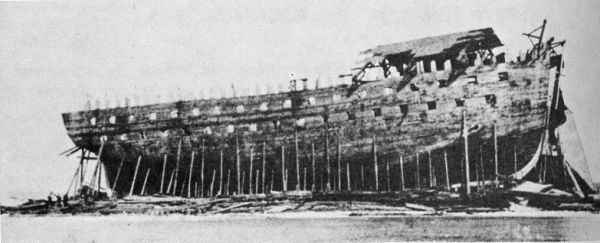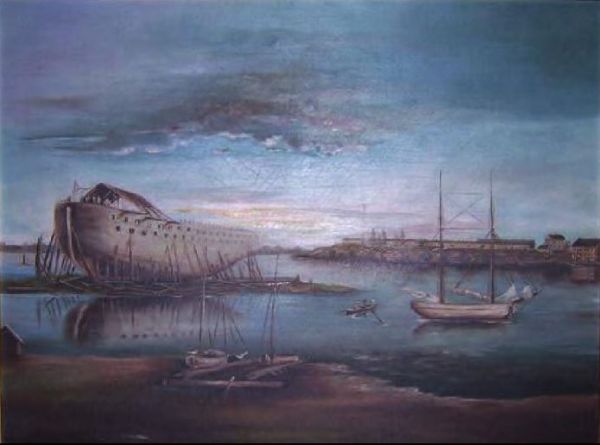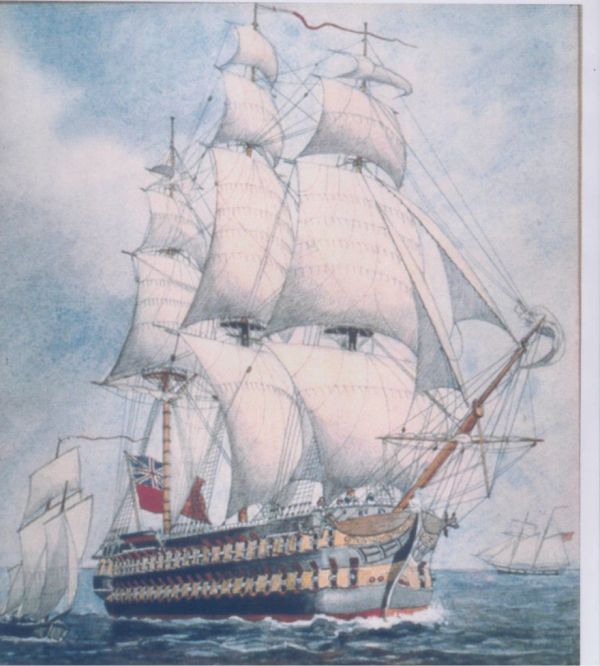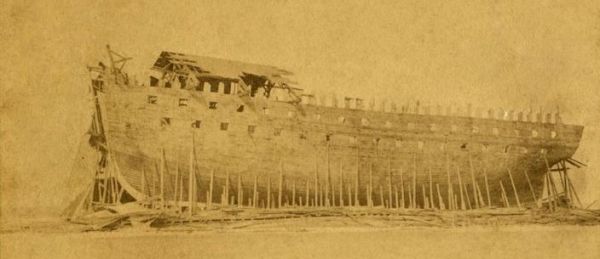USS New Orleans
We
are now in the midst of the bicentennial of the War of 1812. I find
this war fascinating and my interest has led me to write numerous posts
on the subject for Neatorama. For example, last Sunday, I published a
lengthy piece to mark the two hundredth anniversary of the burning of Washington--an event the British Embassy in Washington humorously observed with a White House-shaped cake surrounded by sparklers:
One of our more popular War of 1812 posts is this one about HMS St. Lawrence,
a massive, 112-gun warship that the Royal Navy built on Lake Ontario.
At the time, ships could not readily enter or exit that lake, so this
huge expenditure of British treasure was trapped there.
HMS St. Lawrence
When the St. Lawrence
sailed out of Kingston harbor on Sept. 10, 1814, the Americans were
properly fearful of the consequences. The US Navy on the lake had no
force capable of defeating it in battle.
But that did not stop the Americans from trying. President Madison hoped to build two battleships equal to the St. Lawrence.
How the nearly bankrupt United States hoped to pay for this goal is a
mystery to me. But, to their credit, the American shipbuliders at
Sackett’s Harbor, New York made serious progress toward that goal with
minimal financial backing.
The result of their efforts is pictured above: the USS
New Orleans. Shipwrights laid it down in January of 1815. As the war ended in February, they never finished it.
But if they had, the New Orleans would have been the largest warship in the world. It was being planned as it was being built, so we cannot be sure of its specifications. But it might have carried as many as
130 guns and been
crewed by 900 men.
Thankfully, peace intervened. The treaty signed at Ghent ended the war on the basis of status quo ante bellum.
This was the end to the second and final war between the United States
and Britain. But the popular view on both sides at the time was that
Ghent established a temporary armistice. War would likely return soon.
So the USS
New Orleans
remained incomplete, in its stocks, while Americans and Britons looked
at each other suspiciously across Lake Ontario. Even after the
demilitarization of the Great Lakes with the 1817
Rush-Bagot Agreement, the
New Orleans sat not in a state of readiness, but at least hypothetically useful.
It
remained in place until 1883. It was then that the US Navy sold the
rotting remains of the obsolete hulk to a merchant in Syracuse, New
York. By that time, US-British relations had
greatly improved and the possibility of war between the two nations seemed unlikely. The mightiest warship that never was would never be.





No comments:
Post a Comment